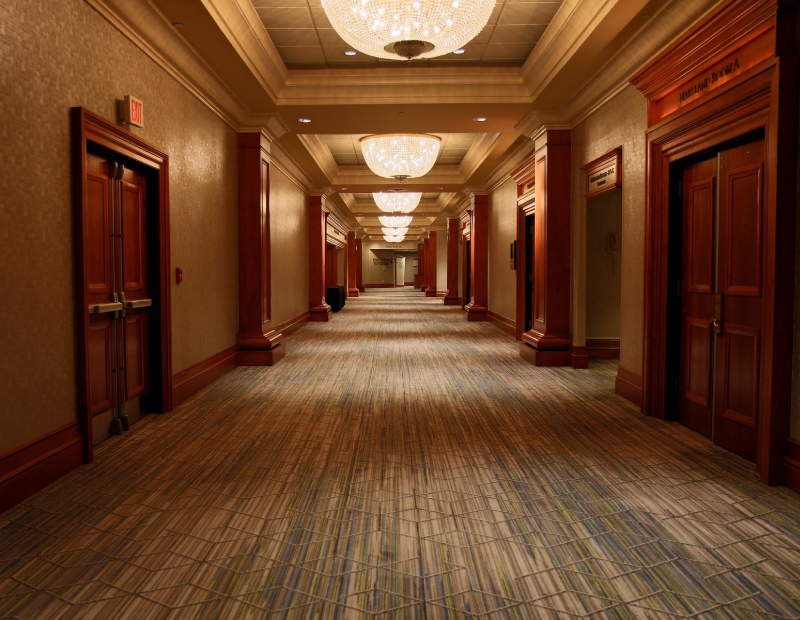Hospitality Faces Coronavirus Crunch Time
A report from the U.S. Travel Association offers a sobering assessment of sharp declines in hotel occupancy and revenue, as well as a surge in job losses.
After forecasting last week that the coronavirus outbreak could cost the U.S. travel sector 4.6 million jobs by the end of April, including indirect impacts, the U.S. Travel Association released a revised report this week, highlighting the accelerating economic burden created by the crisis. Based on data from Oxford Economics and its Tourism Economics subsidiary, the report looks at the effects on GDP, unemployment and taxes.
READ ALSO: CPE’s Coronavirus Coverage
The analysis paints a sobering picture of as many as 4.7 million direct job losses in the travel industry. Food services will lead those losses, with as many as 1.9 million positions, followed by lodging (870,000) and recreation and amusement (824,000). When indirect employment impacts are factored in, as many as 5.9 million positions could be lost this year as a result of travel declines, potentially more than doubling the unemployment rate from 3.5 to 7.1 percent.
The hardest-hit sector
As 18 million fewer travelers are projected to visit the U.S. this year compared to 2019, and with domestic tourism rapidly declining, a 78 percent drop in revenue is expected over the next two months, with losses to continue throughout the year. This could result in an overall decline of 34 percent for the year, equal to $400 billion. As a result, the total economic setback is likely to exceed $900 billion in economic output, more than seven times the effect of 9/11 on travel sector revenue. Total losses in the industry are projected to far surpass that of any other sector.
This contraction, coupled with an expected $62 billion decline in taxes, could take a toll on the GDP of more than $500 billion this year, with the U.S. economy likely to enter a protracted recession based on the projected downturn in tourism alone, the report states. The recession is expected to last at least two quarters.
With travel restrictions likely to loosen in the summer, declines in the industry are expected to follow suit and begin to reverse course, according to the report. Based on these forecasts and expected measures meant to reduce the load on the industry, the U.S. Travel Association presented two potential scenarios for shortening the duration of losses. The first implies that full recovery could be achieved in June, while the second suggests that a potential recovery could reach 50 percent by then. The less optimistic scenario projects that total benefits could reach as much as $61 billion in travel industry revenue, $9.5 billion in taxes and as many as 910,000 restored jobs. Compared to this, the first scenario sees revenue, taxes and job recovery increase by a factor of two.
Travel Slowdown’s State Toll
According to the American Hotel and Lodging Association, the hotel industry supported some 8.3 million direct and indirect jobs prior to the crisis. AHLA put out a study based on Oxford Economics data, which examined the states that could lose the most travel-related jobs due to the outbreak. The three most affected states could lose as many as 1 million travel jobs combined.
Before the coronavirus outbreak, California, which is currently on lockdown, led the way in hospitality employment across the U.S., with a little more than 1 million jobs. Last year, leisure and hospitality employment in San Francisco rose 3.1 percent (6,100 jobs) to 204,600 positions and accounted for 12.2 percent of the job market. The metro also had one of the lowest unemployment rates in the state, at 2.2 percent in December, 120 basis points below the national average. However, during the week of March 8-14, San Francisco’s RevPAR fell 63 percent year-over-year, to $68.56 from $186.86, according to Kroll Bond Ratings Agency.
In Los Angeles, where a record 50 million visitors passed through in 2018, employers added 8,800 jobs in the sector last year, a 1.6 percent uptick, amounting to 545,500 positions throughout the metro—equal to 11.3 percent of the total employment pool. Meanwhile, AHLA noted that California is expected to lose 414,000 hotel-related jobs as a result of the COVID-19 crisis.
READ ALSO: Home-Sharing Takes Big Hit From Coronavirus
Florida was the second-largest hospitality state prior to the outbreak, with almost 750,000 jobs in the sector. Orlando added 13,500 leisure and hospitality jobs last year, up 4.6 percent from 2018, amounting to 308,800 positions, making it the metro’s strongest employment sector with a share of 18.2 percent. However, STR stated that hotel occupancy dropped by 75 percent in Central Florida during the week of March 15-21 compared to the same period last year, with as many as 100,000 guestrooms left unoccupied as a result of the pandemic. The hospitality research firm also noted that Central Florida saw an 84 percent decrease in RevPAR, to $21.13. On top of this, as many as 305,000 workers in the industry could be out of a job in light of current events, according to AHLA.
The industry is facing unprecedented challenges, with sharp declines both in occupancy and revenue, while the full effects of the coronavirus pandemic over the next few months remain unknown. Uncertainty is likely to continue to define the hospitality sector, not just throughout this crisis but for months or years to come, as the sector’s recovery depends on both how long the pandemic lasts and its overall economic ramifications.








You must be logged in to post a comment.